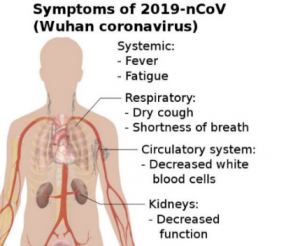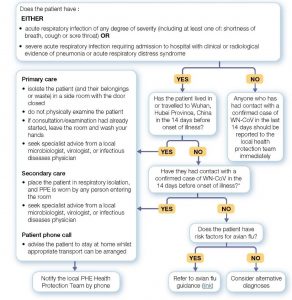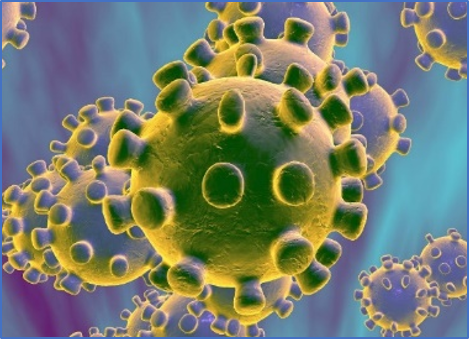by Mal Coates
Controlling the spread of misinformation about novel coronavirus is becoming a challenging task for media especially for technology giants running social media and messaging platforms. What pleasure individuals receive from posting false and misleading information on medical emergencies such as the Corona Virus renders the writers speechless. However, these types of misinformation and conspiracies exist, and we must exhaust all efforts to eliminate or as a minimum mitigate these online posts as expeditiously as possible. We also need assistance from the providers of social media platforms to be as vigilant as possible in identifying and removing these posts.
Rumours:
- Bill Gates created the coronavirus.
One conspiracy theory being shared on Facebook and other sites suggests Bill Gates predicted the coronavirus several months ago and was involved in “patenting” it. But Facebook spokesperson said the Gates hoax had been rated as false by several third-party fact checkers.
- The coronavirus is a bioweapon.
Another conspiracy theory circulating on social media claims the coronavirus is a bioweapon. For example, an account on a video app called TikTok, suggested that the Chinese Government started the coronavirus to decrease the country’s population size.
On YouTube, ads for top brands had been shown on videos claiming coronavirus is a bioweapon, earning money for both the content maker and the video platform. But the ads have since been removed from these videos.
- You can protect yourself by drinking bleach.
Posts on Weibo, Twitter and Facebook have suggested people rinse their mouths with a saltwater solution to prevent infection, which is not recommended. The Daily Beast also found promoters of the pro-Trump QAnon conspiracy theory dangerously advising fans to drink bleach in an attempt to ward off the illness.
Several private groups on Social Media focused on the disease have emerged in recent days. While some users in these spaces are asking for advice about masks and protective measures, others are sharing erroneous theories about both the cause of coronavirus and potential solutions.
Key points:
Misinformation about the coronavirus is spreading on social media.
Experts say the situation is unsurprising, but better communication is needed.
Social media companies and messaging platforms like WhatsApp, Facebook Messenger among others, have long struggled with the spread of health misinformation, especially during outbreaks of diseases.
The coronavirus situation is evolving quickly. People can send misinformation quickly and sensationally to a large audience and going viral.
With so many options for social media and availability of messaging apps, people find it very easy to spread the word, not knowing if information is accurate and true or just rumours or hoax.
What we do not know are the facts of the virus’s presence as well as its origins and how to cure it.
What can be done to stop misinformation?
We know that some social media companies have taken steps to prevent the spread of bad information according to some news reports, however, we need to educate the society when to trust news sources or not. To avoid being misled, look for information from trusted media and government voices, and avoid information that appears to be unsourced. We need to maintain awareness of any disease outbreaks by checking official sources and trusted news agencies. We need to recognise that there are some questions about coronavirus that we don’t yet know the answers to, that even Doctors are still trying to find out as they conduct their research on this health epidemic.
For that reason, social media companies, government and science communicators should share “simple, clear, straightforward messages” about the outbreak.
Your most urgent questions about the new coronavirus
Scientists are racing to unravel the mysteries of a new coronavirus that recently emerged in China. The outbreak is now a global public health emergency, as announced by the World Health Organization on January 30. The latest reports (at the time of the release of this information) show 259 deaths and 11,791 infected persons all in China. Its rapid spread has sparked global concern. It is also triggering many questions from researchers and the public alike. In this rapidly evolving epidemic, many unknowns remain.
History of Coronavirus ?
Coronaviruses originate in wild animals. Sometimes they leap to humans. Bats often carry coronaviruses. However, in most cases they don’t pass these viruses directly to people.
The term Corona Virus includes a large group of viruses that cause illnesses such as the common cold and gastrointestinal infections, and more recent diseases including SARS (Severe Acute Respiratory Syndrome) and MERS (Middle East Respiratory Syndrome).
- SARS was a new Coronavirus (SARSr-CoV) which started in Guangdong Province China in 2003. About 8,000 people were infected and less than 800 people died. The origin of SARSr-CoV is thought to have originated in bats, was transmitted to masked palm civets and then to humans.
- MERS was another new Coronavirus (MERS-CoV) which started in Saudi Arabia in 2012. About 1,400 people were infected and 500+ people died. The origin of MERS-CoV is thought to have originated in bats, was transmitted to camels and then to humans.
New virus strains emerge relatively frequently because the genetic structure of most viruses is so prone to mutating and changing.
As the number of confirmed cases of deadly coronavirus across the globe continues to grow, experts are beginning to get a greater understanding of the disease and its impact.
When did the outbreak start?
Chinese officials notified the World Health Organization on December 31, 2019 of an unknown pneumonia-like disease in 44 patients. Initial reports tied this disease to a seafood market in Wuhan, a city in central China’s Hubei Province.
But the earliest cases may not be related to exposure at the market. A team of Chinese researchers reported January 24, 2020 in The Lancet (a weekly peer-reviewed general medical journal that is among the world’s oldest, most prestigious, and best known general medical journals).
The earliest known patient who presented ill at a medical facility was December 1, 2019. He had not been exposed to the market, according to the study, although the first person who died had been.
Methods of containing the virus by isolating patients in China and other countries are quite similar, which provides consistency for the global community.
“The Wuhan market was not considered the [source of the] index case. It was an amplifier,” said Anthony Fauci. “People crowded in the market infected each other.” Fauci directs the National Institute of Allergy and Infectious Diseases in Bethesda, Md. He was speaking at a Biothreats meeting in Arlington, Va., that was sponsored by the American Society for Microbiology.
Can it infect pets?
There are currently no reports of pets getting sick with 2019-nCoV.
While the Centre for Disease Control and Prevention) (CDC) recommends that people traveling to China avoid animals, the agency says there is no reason to believe that animals or pets in the United States or other countries can transmit the virus.
What are the symptoms of a 2019-nCoV infection?
People sickened by the new virus may develop a fever, cough and may experience difficulty in breathing, according to the CDC. These symptoms are like SARS, though many people with 2019-nCoV might experience mild symptoms, others can develop pneumonia.
The symptoms of 2019-nCoV may appear from two to 14 days after exposure. On average, it may take someone five days to become visibly sick, researchers reported January 29, 2020 in the New England Journal of Medicine. That number, however, is based on only 10 patients. So it needs further study, the researchers reported.

How infectious is the virus?
Researchers don’t yet know. But since 2019-nCoV has never infected humans before last year, people have not yet developed immunity to it.
How infectious a virus can be is described by what’s known as R0, or R naught (R0 is pronounced “R naught.” It’s a mathematical term that indicates how contagious an infectious disease is. … If a disease has an R0 of 18, a person who has the disease will transmit it to an average of 18 other people, where no one has been vaccinated against it or is already immune to it in their community.
It is how many people each sick person, tends to spread the virus to when a disease-causing organism hits a population where no one is immune, explains Maimuna Majumder (a computational epidemiologist), someone who uses math to help track and investigate the spread of disease. She works in Massachusetts at Boston Children’s Hospital and Harvard Medical School.
Almost no virus spreads as far as its possible limits, Majumder says. “In general,” she says, “we don’t see transmission rates as high as the reproduction number would suggest.” For instance, people might wash their hands a lot. Or they might stay home to avoid getting sick. People who are sick may isolate themselves. By practicing sound and basic health requirements and practices these things could mean that a virus can’t reach its full potential for spread.
SARS has an R0 of 2.0 to 4.0. That means that each infected person had the potential to pass it on to two to four others. Generally, viruses with reproduction numbers greater than 1.0 may keep spreading if nothing is done to stop them. Outbreaks of viruses with an R0 that falls at or below 1.0 should eventually die out.
How long does it stay on surfaces?
Researchers aren’t sure, but not very long. Or that’s what they expect, based on what they know about other coronaviruses. These viruses typically survive on a surface for only a few hours, notes Nancy Messonnier (Director of the CDC’s National Centre for Immunization and Respiratory Disease in Atlanta, Ga.) spoke in a news conference on January 27, 2020.
While it’s still unclear how the new virus spreads, coronaviruses in general are thought to be spread primarily by respiratory droplets. These are spread when patients cough, for instance. There is no evidence suggesting 2019-nCoV can be transmitted from things such as imported goods, according to the CDC.
How does it spread?
The new virus is spreading from person to person. Like SARS and MERS, it probably spreads between people similarly to other respiratory diseases, the CDC says. Respiratory droplets from an infected person’s cough or sneeze can carry virus to someone new.
Some coronaviruses can cause the common cold. Severe coronaviruses infect deeper parts of the respiratory tract than cold viruses do. So infected people are not usually contagious until they start to show symptoms, says Stanley Perlman (virologist at the University of Iowa in Iowa City). However, there is new information challenging the belief, only infected individuals can transmit the disease.
Although people showing no symptoms may be capable of spreading viruses such as those that cause influenza or measles, that would be new for the types of coronaviruses that cause epidemics, Perlman says.
And if that proved true, it could make the outbreak harder to control. For instance, with no signs that people are sick, airport screenings would be less useful. The good news: Traditionally symptom-free people have never been the major driver of epidemics.
How deadly is the disease?
The coronaviruses that cause colds usually bring fairly mild symptoms. They tend to just affect the upper airways (sinuses and throat). But the new virus penetrates much deeper into the respiratory tract. 2019-nCoV is “a disease that causes more lung disease than sniffles,”. It is the damage to the lungs that can make these viruses deadly.
An analysis of 99 hospitalized patients, including the first cases from Wuhan, shows that 17 developed what is known as acute respiratory distress syndrome. It’s a condition that affects the lungs and can limit the blood from getting enough oxygen. Eleven of these patients would go on to die from multiple organ failure. A team of 14 researchers in Wuhan and Shanghai, China, described the cases online January 29, 2020 in The Lancet.
The 2003 SARS outbreak killed nearly one in every 10 of the 8,000 people it sickened. MERS, a disease that still circulates in the Middle East, is more deadly. It kills about three in every 10 infected people. Right now, 2019-nCoV seems less virulent. Its death rate appears to be about four in every 100 infected people. That’s what the World Health Organization reported on January 23. But that number may well change as more cases are diagnosed.
More widespread screening may show exactly how many people get the virus but have mild or no symptoms. That will help researchers calculate how deadly the virus is.
What are the best ways to protect yourself?
There is no drug or vaccine to treat or prevent 2019-nCoV. But there are things people can do to limit the chance they will become infected. And they aren’t much different from what you’d do to keep from picking up colds or the flu, the CDC says. Wash your hands with soap and water for at least 20 seconds. Other tips include covering your mouth when you cough or sneeze (or coughing or sneezing onto the floor if no handkerchief or tissue is available). Finally, don’t touch your eyes, nose or mouth. Viruses may have been on surfaces (such as stair railings or door handles) that you may have been in contact with.
What about masks?
It makes sense that people help limit the spread of coughed or sneezed-out viruses. Experts confirm, “If you’re infected and you wear a mask, you’ll shed less virus into the air around you.” But it’s not clear how much they’ll help healthy people, medical professionals report. Few of them seal adequately around the nose and mouth. So that leaves plenty of room for airborne germs to be inhaled.
Management of a suspected case of Wuhan novel coronavirus (WN-CoV)

Source: Public Health England
References
- au.com
- org
- Kanishk Karan, Atlantic Council’s Digital Forensic Research Lab
- World Health Organization
- Anthony Fauci, National Institute of Allergy and Infectious Diseases in Bethesda
- New England Journal of Medicine
- Nancy Messonnier, CDC National Centre for Immunization and Respiratory Disease in Atlanta
- Maimuna Majumder, computational epidemiologist
- Stanley Perlman, Virologist at the University of Iowa
- Public Health England
This information is provided free for “information only” to maintain our staff, clients and those that work closely with us to ensure our awareness and that we provide the best information available at the time of posting to ensure their individual Health and Safety in all aspects of their work.

